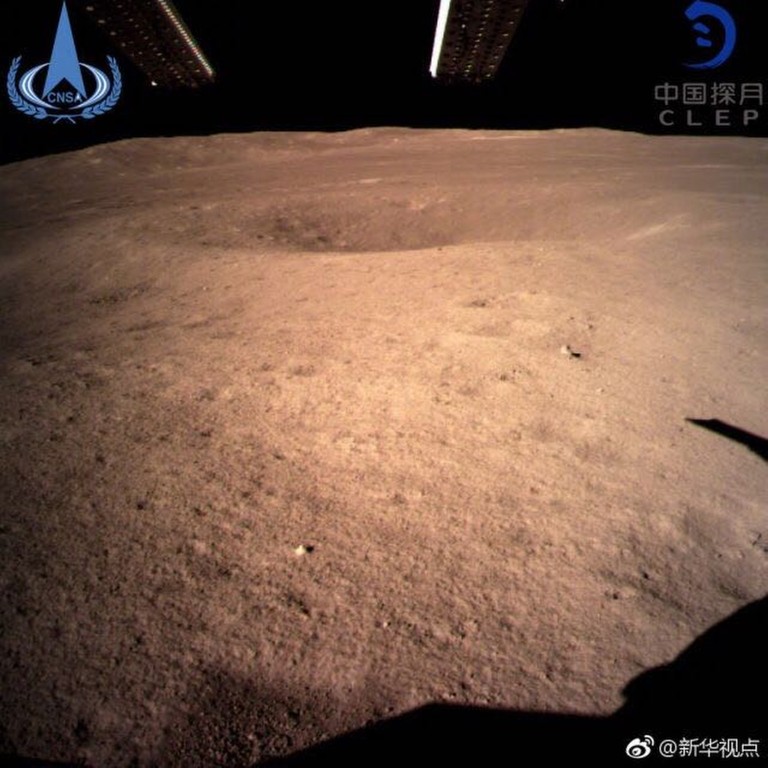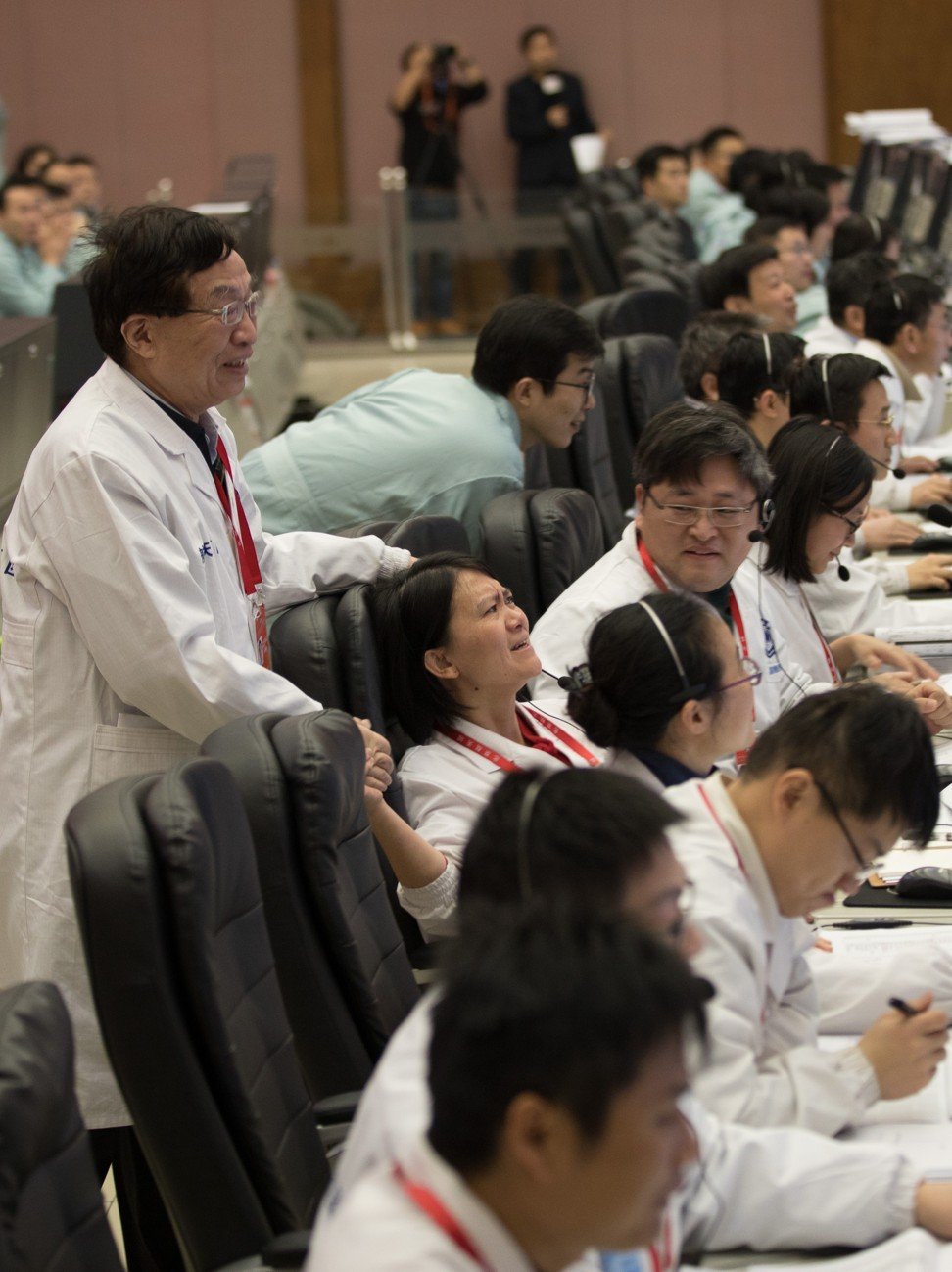
China’s Chang’e 4 lunar probe sends first photo of far side of the moon after historic soft landing
- The soft landing by Chang’e 4 marks the start of a historic survey of a lunar region that has never been explored
China’s space programme made history this morning when its Chang’e 4 lunar spacecraft successfully touched down on the moon’s far side, which has never been explored.
The lunar lander and rover spacecraft completed the world’s first soft-landing on the uncharted far side at 10.26am Hong Kong time, near the moon’s south pole, before taking the first photograph of that part of the moon.
Chang’e 4 was launched atop a Long March 3B carrier rocket on December 8 at the Xichang Satellite Launch Centre in southwest China’s Sichuan province. It entered lunar orbit four days later.
The vehicle carries a suite of instruments designed to help record and define the region’s geology as well as equipment to conduct biological experiments.
China National Space Administration has said that Chang’e 4’s scientific tasks included astronomical observation using low-frequency radio; surveying the terrain and land forms; detecting the mineral composition and shallow lunar surface structure; and measuring neutron radiation and neutral atoms – all to develop an understanding of the environment on the moon’s far side, also called the dark side.
Long Xiao, a planetary geoscientist at China University of Geosciences in Wuhan, said that the selected landing region for Chang’e 4 was within the South Pole-Aitken (SPA) basin, the moon’s largest, deepest and oldest impact structure. Its depth and gravity measurements suggest that the huge impact may have exposed the moon’s mantle.
Data gathered by Chang’e 4 could illuminate the history of the basin. Long said scientists hoped to study the composition of the sheet of melted rock that would have filled the basin after it was formed, and possibly upper-mantle materials.
Scientists also hope to gain enhanced understanding of the far-side space environment and the evolution of far-side regolith, the broken-up rocks and dust that make up the lunar surface.
The spacecraft will also cultivate vegetables and flowers inside an airtight container, in experiments involving 28 Chinese universities, led by Chongqing University in southwest China.
The Chang’e 4 mission marks the world’s first expedition to a lunar region that never faces the Earth. All lunar landing probes to date travelled only to the near side, since it is easier to establish and maintain direct radio communication with the entire near side of the moon.
Success of the Chang’e 4 mission would mark the completion of the second phase of the Chinese Lunar Exploration Programme (CLEP), one of 16 key technologies identified by the Chinese government.
According to CLEP, China plans to launch a returnable spacecraft called Chang’e 5 by 2020, under the third and final phase of the plan. Chang’e 5 will include a lunar lander and a rover that could return to Earth after collecting samples and performing lunar surveys.
In addition to home-grown scientific equipment, the Chang’e 4 mission also involves four scientific payloads developed by scientists from the Netherlands, Germany, Sweden and Saudi Arabia.
Additional reporting by Alice Shen






